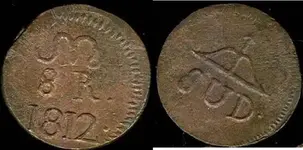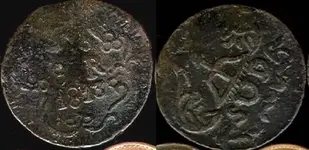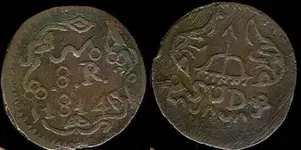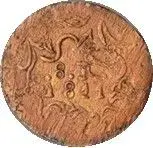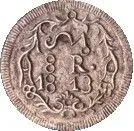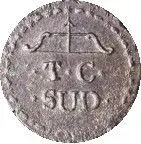Found this interesting.....
In October 1810, Miguel Hidalgo commissioned José María Morelos to organize an army in the south of the country. Morelos became the leader of the insurgent movement after the capture of Hidalgo in March 1811. With Morelos, the insurrection was transformed; he managed to unite the ideas of intermediary groups with the demands of the people, and he proclaimed for the first time non-subjection to the Bourbon monarchy.

The copper coins ordered by Morelos were equivalent to promises of payment. In other words, they could be exchanged for their face value in gold and silver coins upon the triumph of the revolution. Thus, for the first time fiduciary currency was used in Mexico. The obverse of these roughly manufactured coins bore a Morelos monogram along with the denomination and mint year. On the back, a bow and arrow appears, and underneath them, the word “SUD” (“SOUTH”). There were two main variants: A plain one, and another with profuse floral adornment. They were produced in eight, two, one, and half-real coins.

After the siege of Cuautla, Morelos spent several months in Tehuacán. When he left the city, he put the insurgent Manuel Mier y Terán in charge. It is believed that, in the assumption of minting responsibilities, Mier y Terán manufactured a coin type with the initials “T. C.” between the bow and the word “SUD.” These coins had a finer finish, whether due to more adequate machinery or more experienced workers. Several researchers believe the letters “T.C.” mean that the minting took place in Tierra Caliente. Others agree that the abbreviation means Tlacotepec, and still others, Torres de Cuautla. The most common coins of this type were eight-real coins; the rarest are those of two reales and those of half a real.

On November 25, 1812, Morelos attacked and conquered Oaxaca. He found a large quantity of silver bars there, allowing him to resume his mintings, both the “SUD” coins and a variety similar to the provisional Oaxaca coins. The mintings done in Oaxaca were Morelos' most important. Not only was the quantity large, but also the types, varieties and values were numerous. The coins were manufactured in silver and copper, both smelted and minted.

Although the Morelos coin type is quite uniform, there are several varieties due to the fact that the mintings took place in different locations (Tecpan, Huautla, Oaxaca, Acapulco, Tlacotepec, Chilpancingo, Cerro de Atijo, and Tehuacán). Despite research on this subject, we can only conjecture on the mint types, and there is no complete registry of the varieties. The key features of the Morelos coin design are the monogram on the front and the bow and arrow on the back. The monogram bears the letters “M O S,” Morelos’ initials. This feature seems to have undergone a transition from the plain letter “M,” to “JM,” to “JMo,” to “SMo.” But it is impossible to confirm that such a transition took place in that order.
http://www.bancodemexico.gob.mx/sit...nufactFeaturesHistory/historyMexicanCoin.html


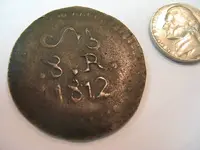
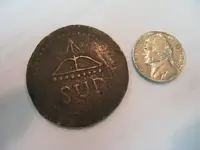
 That is awesome!
That is awesome! 
 The other one is a nickel
The other one is a nickel 